Clinician-Client Relationship in Pediatric Speech-Language Therapy
VerifiedAdded on 2023/05/27
|11
|524
|476
Literature Review
AI Summary
This literature review examines the clinician-client relationship in speech-language therapy for children, focusing on parents' perspectives. It highlights the importance of a healthy relationship between the clinician and client, composed of an emotional bond, congruent goals, and collaboration. The r...
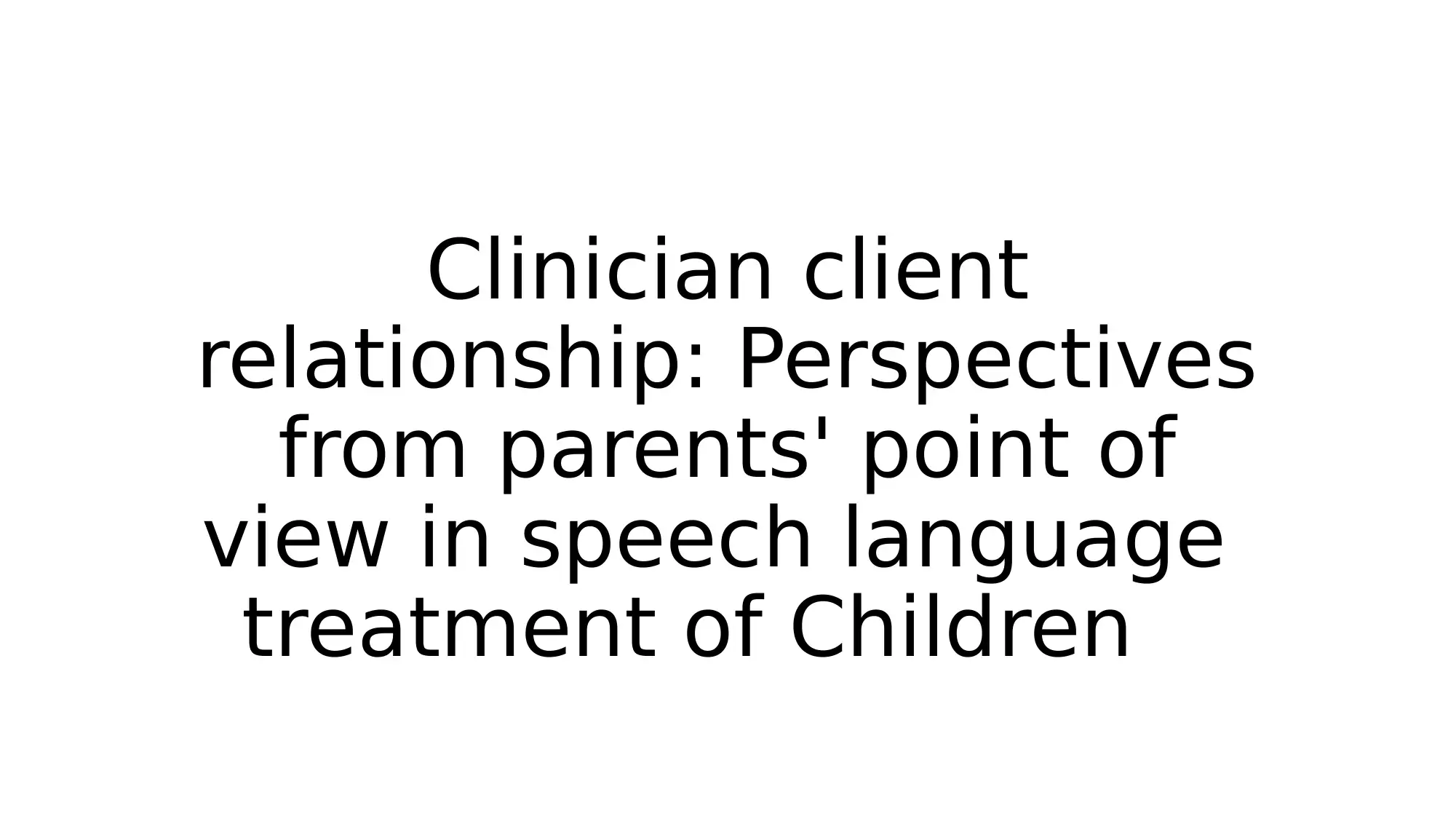
Clinician client
relationship: Perspectives
from parents' point of
view in speech language
treatment of Children
relationship: Perspectives
from parents' point of
view in speech language
treatment of Children
Secure Best Marks with AI Grader
Need help grading? Try our AI Grader for instant feedback on your assignments.
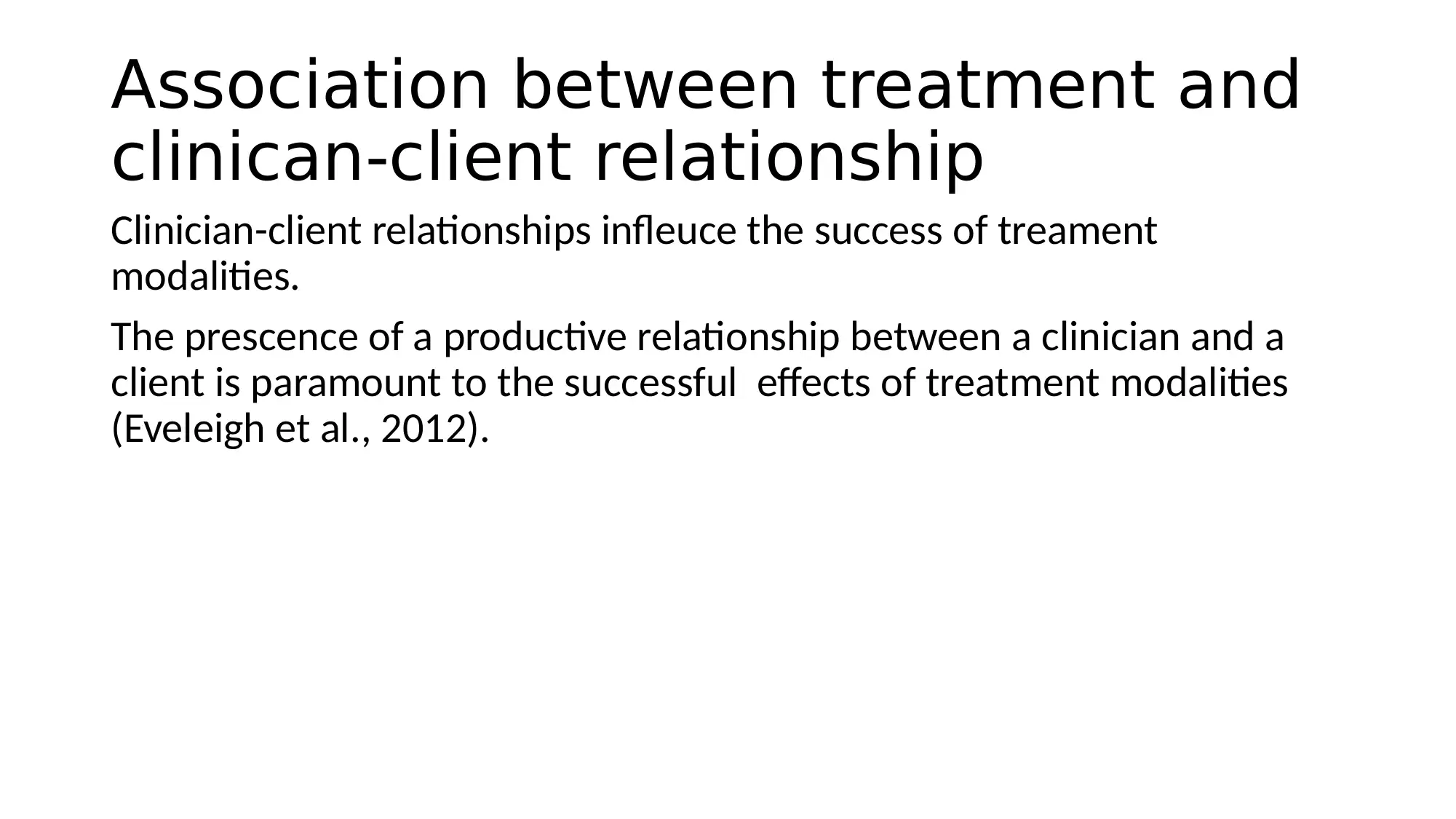
Association between treatment and
clinican-client relationship
Clinician-client relationships infleuce the success of treament
modalities.
The prescence of a productive relationship between a clinician and a
client is paramount to the successful effects of treatment modalities
(Eveleigh et al., 2012).
clinican-client relationship
Clinician-client relationships infleuce the success of treament
modalities.
The prescence of a productive relationship between a clinician and a
client is paramount to the successful effects of treatment modalities
(Eveleigh et al., 2012).
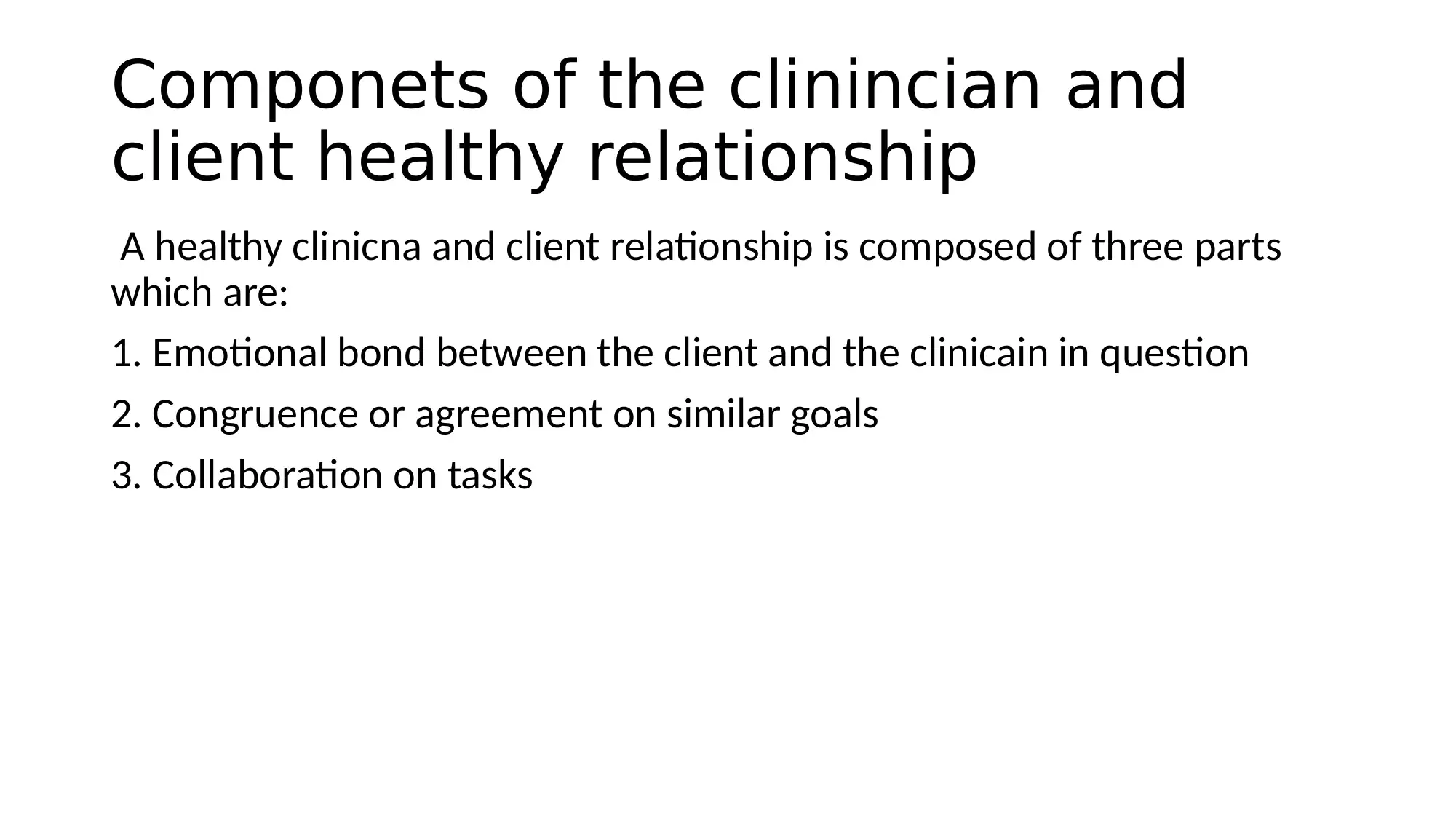
Componets of the clinincian and
client healthy relationship
A healthy clinicna and client relationship is composed of three parts
which are:
1. Emotional bond between the client and the clinicain in question
2. Congruence or agreement on similar goals
3. Collaboration on tasks
client healthy relationship
A healthy clinicna and client relationship is composed of three parts
which are:
1. Emotional bond between the client and the clinicain in question
2. Congruence or agreement on similar goals
3. Collaboration on tasks
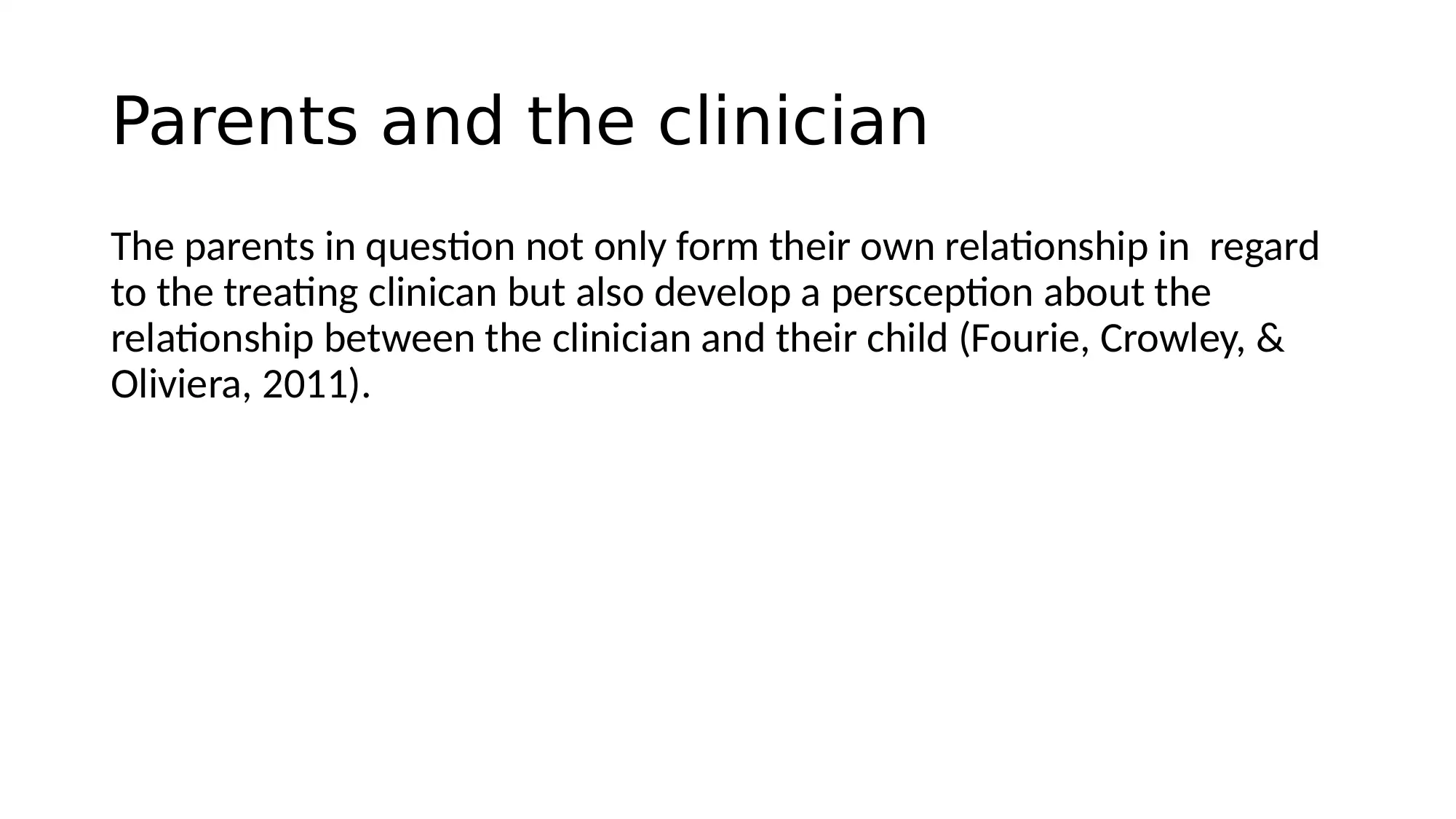
Parents and the clinician
The parents in question not only form their own relationship in regard
to the treating clinican but also develop a persception about the
relationship between the clinician and their child (Fourie, Crowley, &
Oliviera, 2011).
The parents in question not only form their own relationship in regard
to the treating clinican but also develop a persception about the
relationship between the clinician and their child (Fourie, Crowley, &
Oliviera, 2011).
Secure Best Marks with AI Grader
Need help grading? Try our AI Grader for instant feedback on your assignments.
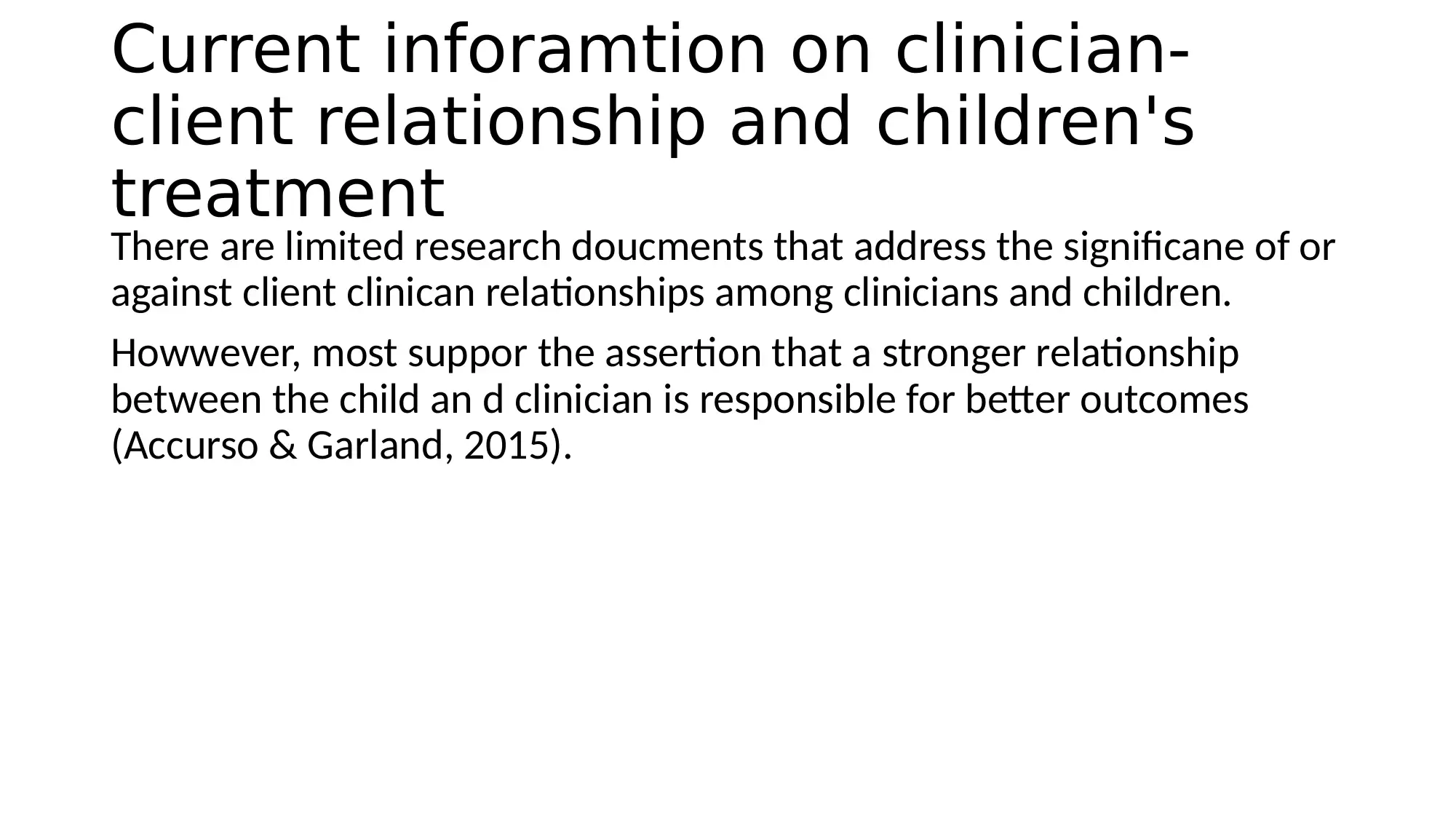
Current inforamtion on clinician-
client relationship and children's
treatment
There are limited research doucments that address the significane of or
against client clinican relationships among clinicians and children.
Howwever, most suppor the assertion that a stronger relationship
between the child an d clinician is responsible for better outcomes
(Accurso & Garland, 2015).
client relationship and children's
treatment
There are limited research doucments that address the significane of or
against client clinican relationships among clinicians and children.
Howwever, most suppor the assertion that a stronger relationship
between the child an d clinician is responsible for better outcomes
(Accurso & Garland, 2015).
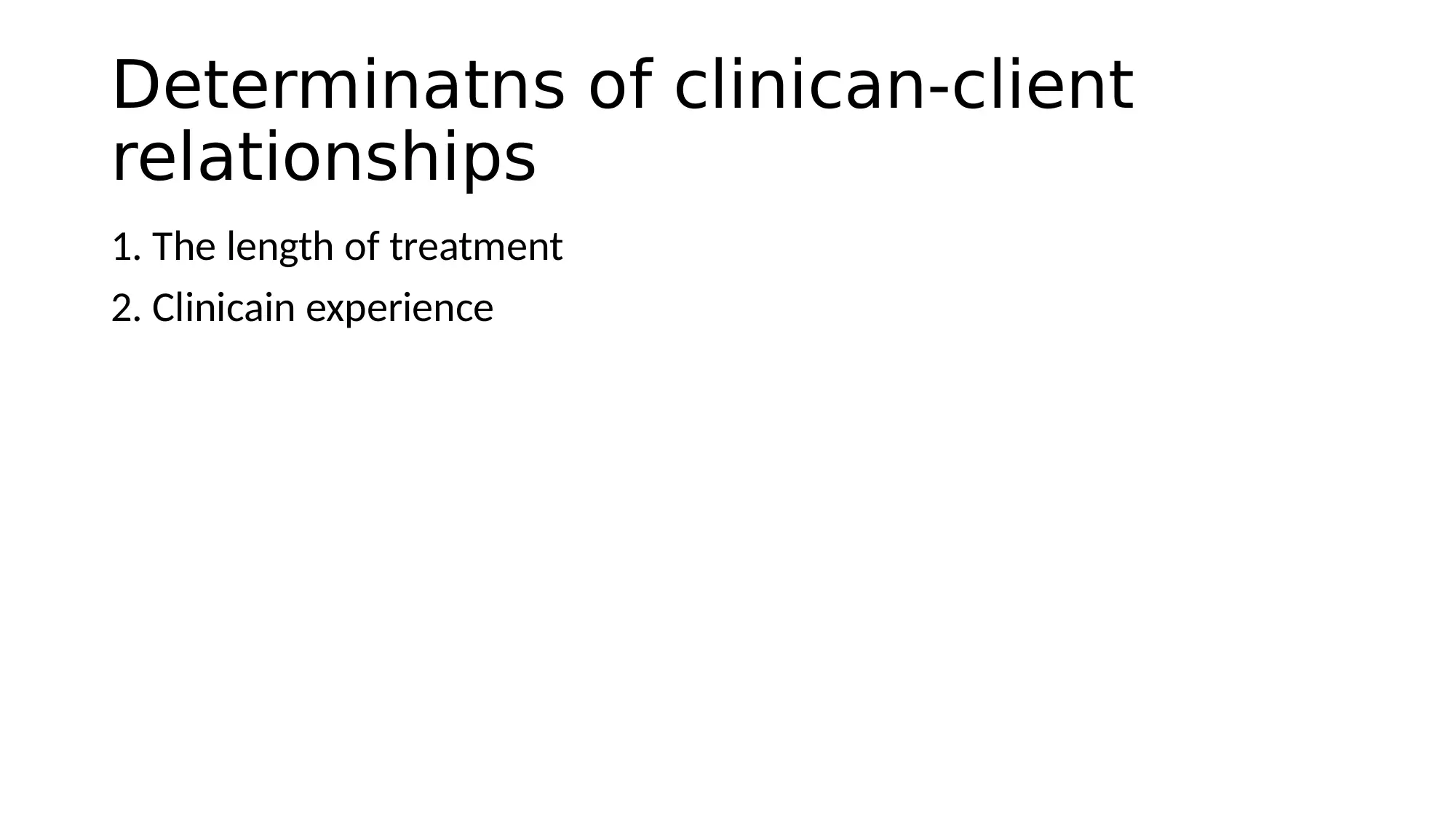
Determinatns of clinican-client
relationships
1. The length of treatment
2. Clinicain experience
relationships
1. The length of treatment
2. Clinicain experience
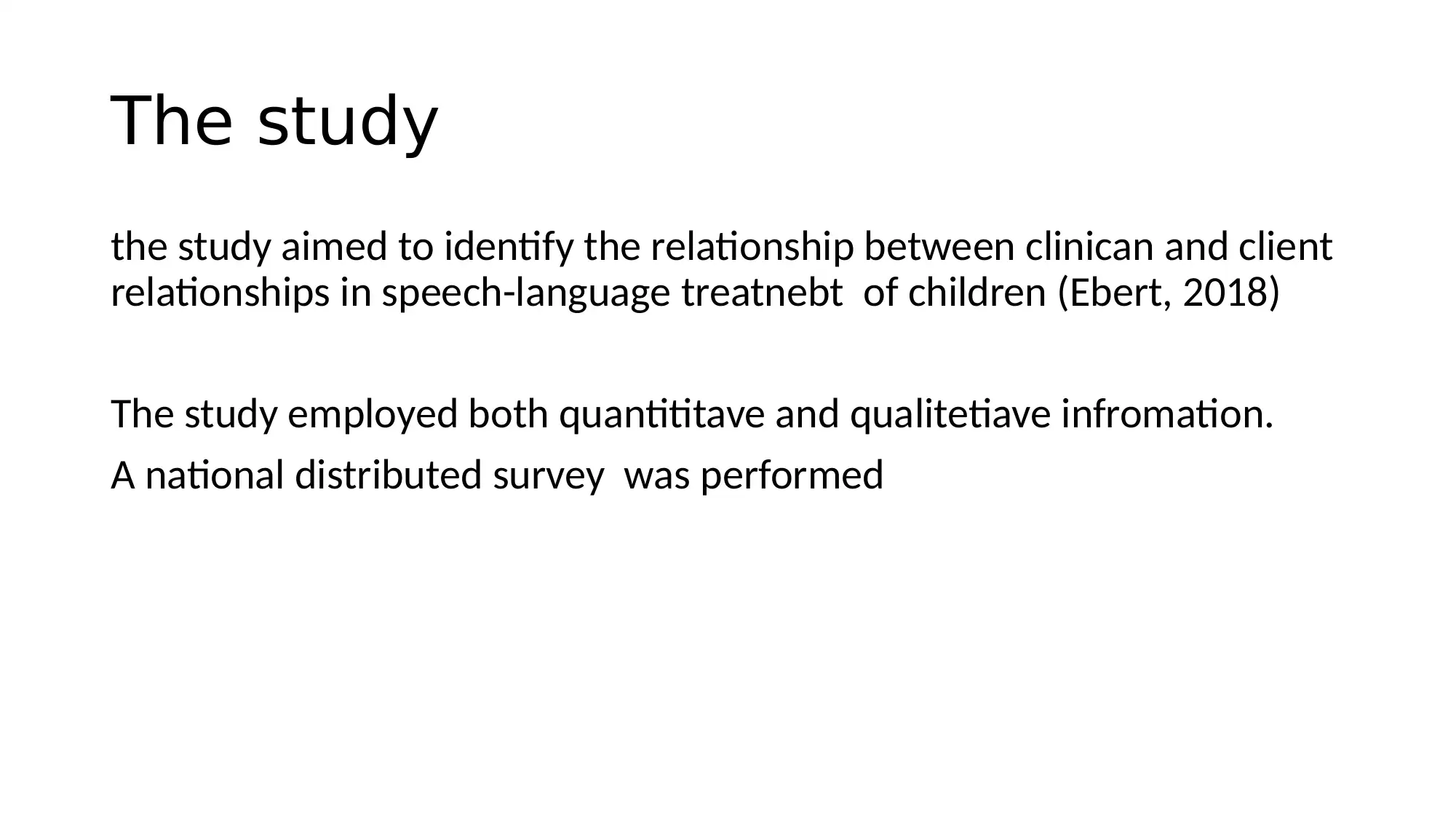
The study
the study aimed to identify the relationship between clinican and client
relationships in speech-language treatnebt of children (Ebert, 2018)
The study employed both quantititave and qualitetiave infromation.
A national distributed survey was performed
the study aimed to identify the relationship between clinican and client
relationships in speech-language treatnebt of children (Ebert, 2018)
The study employed both quantititave and qualitetiave infromation.
A national distributed survey was performed
Paraphrase This Document
Need a fresh take? Get an instant paraphrase of this document with our AI Paraphraser
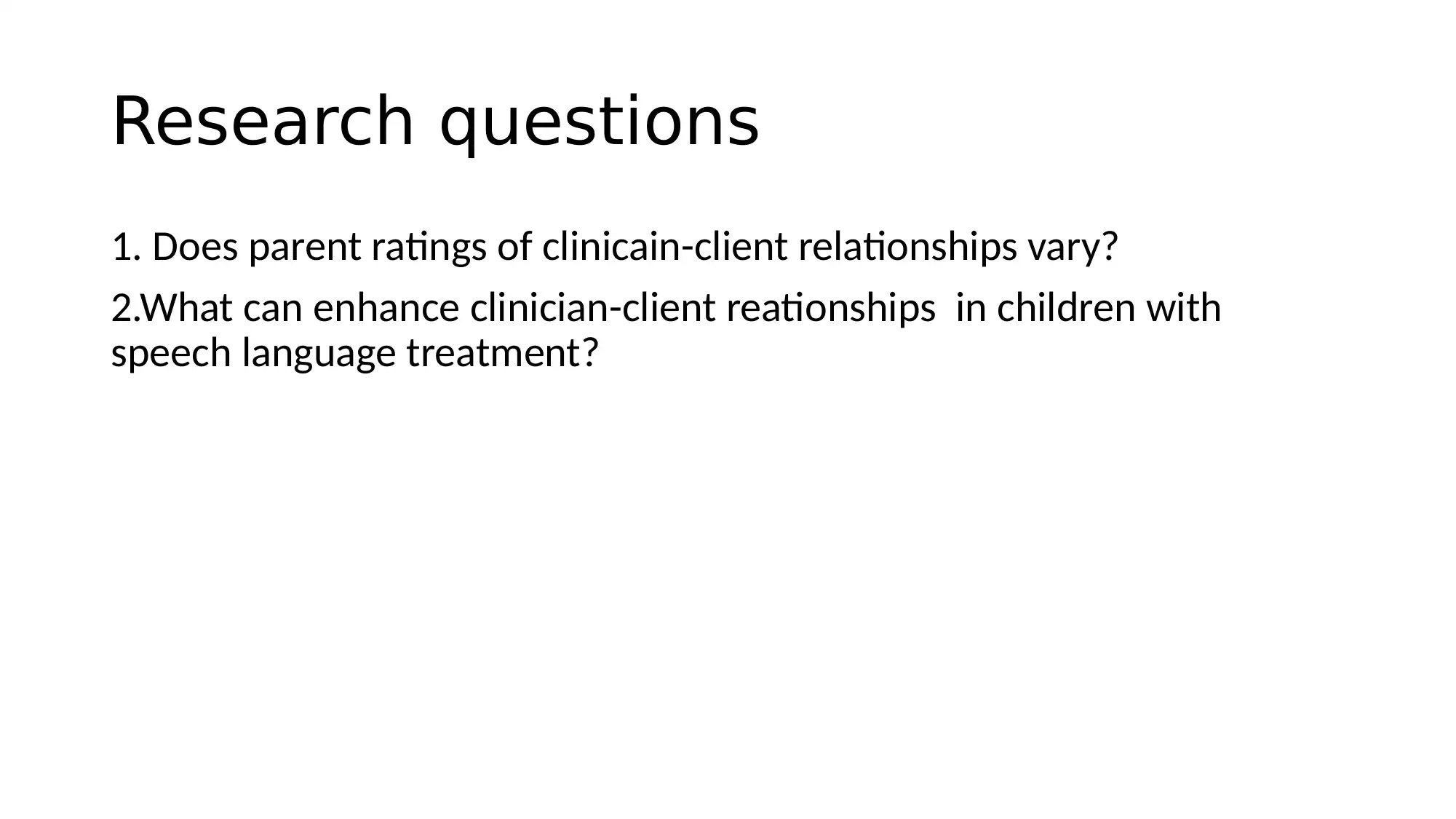
Research questions
1. Does parent ratings of clinicain-client relationships vary?
2.What can enhance clinician-client reationships in children with
speech language treatment?
1. Does parent ratings of clinicain-client relationships vary?
2.What can enhance clinician-client reationships in children with
speech language treatment?
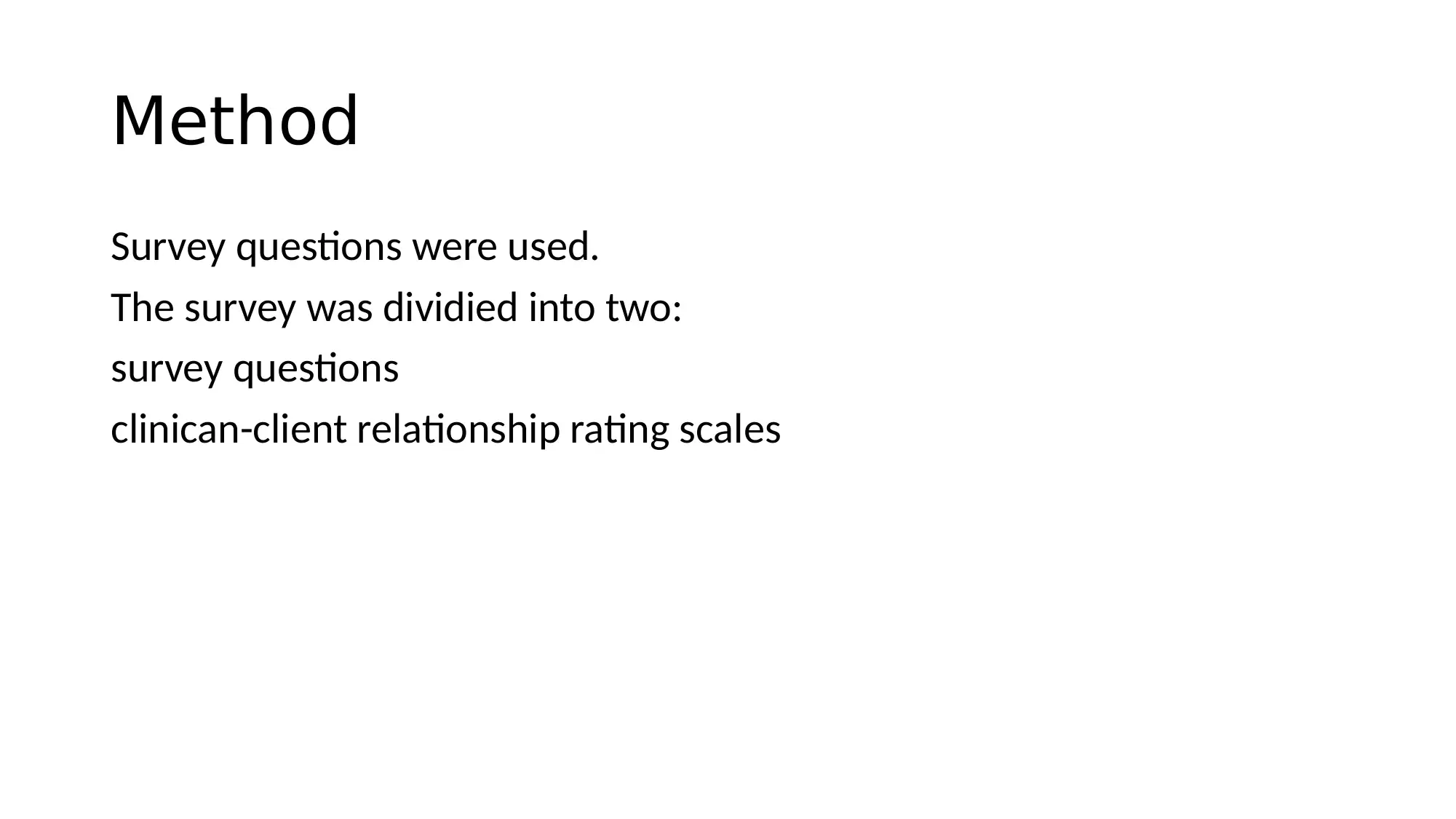
Method
Survey questions were used.
The survey was dividied into two:
survey questions
clinican-client relationship rating scales
Survey questions were used.
The survey was dividied into two:
survey questions
clinican-client relationship rating scales
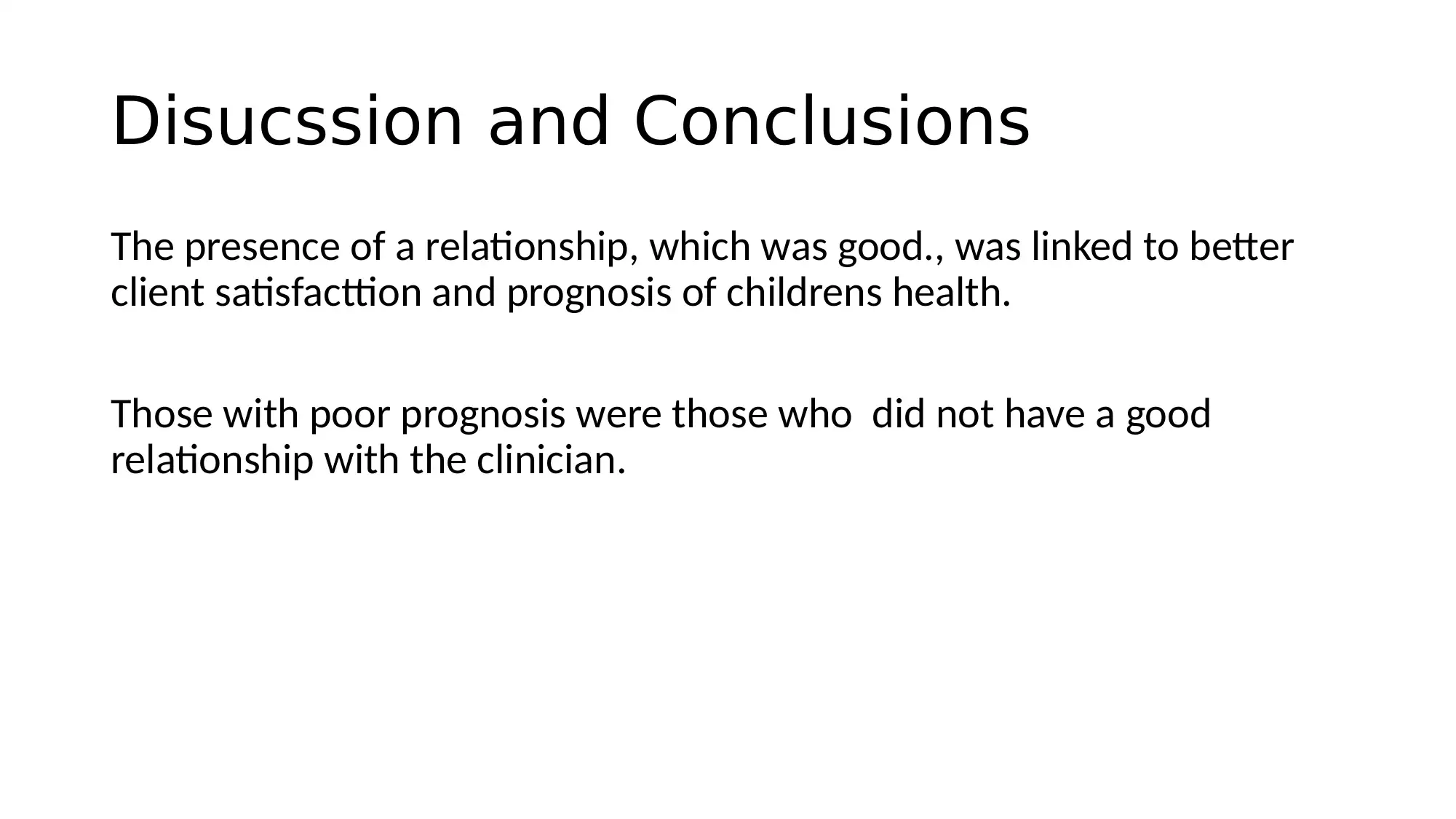
Disucssion and Conclusions
The presence of a relationship, which was good., was linked to better
client satisfacttion and prognosis of childrens health.
Those with poor prognosis were those who did not have a good
relationship with the clinician.
The presence of a relationship, which was good., was linked to better
client satisfacttion and prognosis of childrens health.
Those with poor prognosis were those who did not have a good
relationship with the clinician.
Secure Best Marks with AI Grader
Need help grading? Try our AI Grader for instant feedback on your assignments.
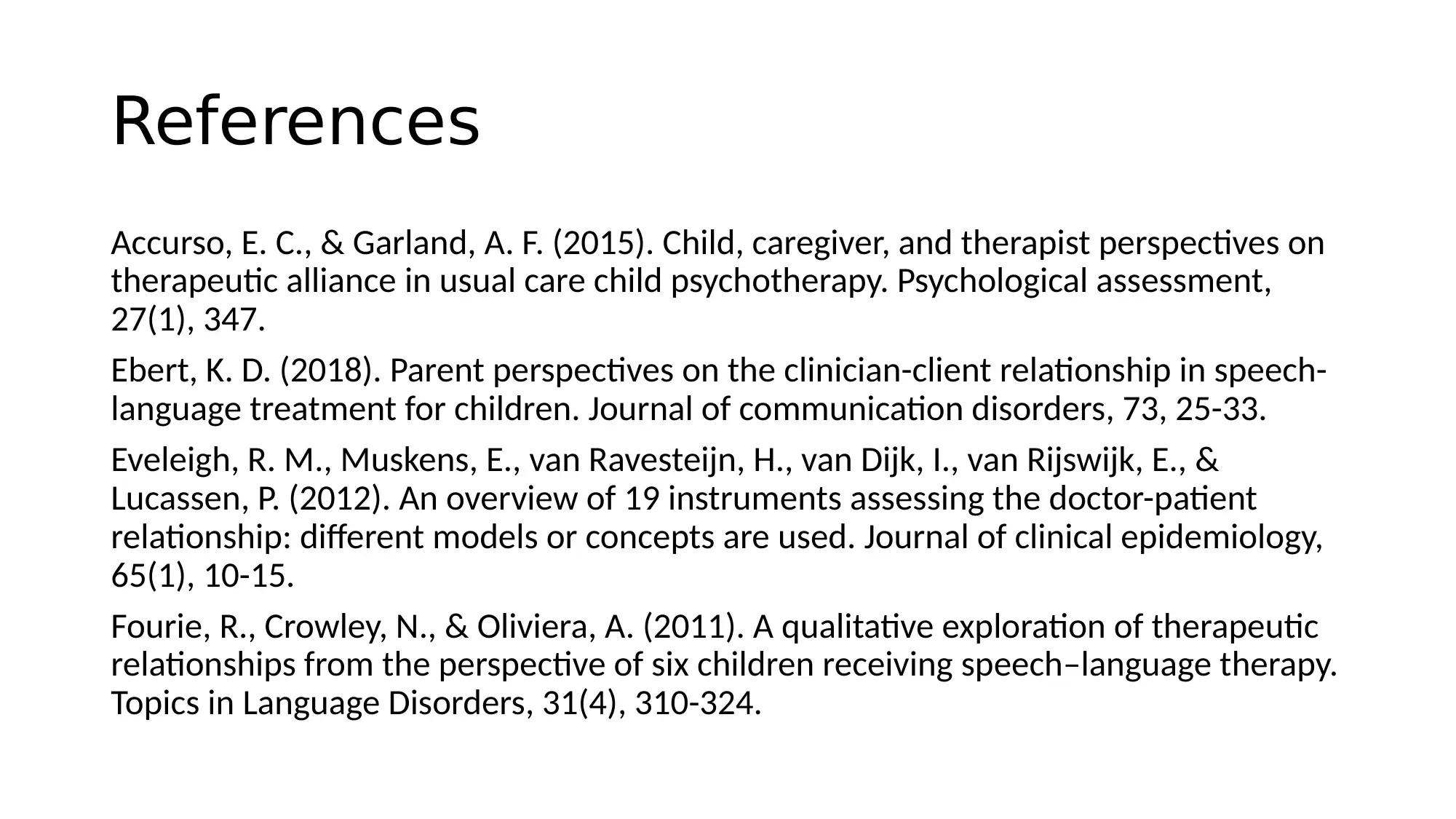
References
Accurso, E. C., & Garland, A. F. (2015). Child, caregiver, and therapist perspectives on
therapeutic alliance in usual care child psychotherapy. Psychological assessment,
27(1), 347.
Ebert, K. D. (2018). Parent perspectives on the clinician-client relationship in speech-
language treatment for children. Journal of communication disorders, 73, 25-33.
Eveleigh, R. M., Muskens, E., van Ravesteijn, H., van Dijk, I., van Rijswijk, E., &
Lucassen, P. (2012). An overview of 19 instruments assessing the doctor-patient
relationship: different models or concepts are used. Journal of clinical epidemiology,
65(1), 10-15.
Fourie, R., Crowley, N., & Oliviera, A. (2011). A qualitative exploration of therapeutic
relationships from the perspective of six children receiving speech–language therapy.
Topics in Language Disorders, 31(4), 310-324.
Accurso, E. C., & Garland, A. F. (2015). Child, caregiver, and therapist perspectives on
therapeutic alliance in usual care child psychotherapy. Psychological assessment,
27(1), 347.
Ebert, K. D. (2018). Parent perspectives on the clinician-client relationship in speech-
language treatment for children. Journal of communication disorders, 73, 25-33.
Eveleigh, R. M., Muskens, E., van Ravesteijn, H., van Dijk, I., van Rijswijk, E., &
Lucassen, P. (2012). An overview of 19 instruments assessing the doctor-patient
relationship: different models or concepts are used. Journal of clinical epidemiology,
65(1), 10-15.
Fourie, R., Crowley, N., & Oliviera, A. (2011). A qualitative exploration of therapeutic
relationships from the perspective of six children receiving speech–language therapy.
Topics in Language Disorders, 31(4), 310-324.
1 out of 11
Your All-in-One AI-Powered Toolkit for Academic Success.
+13062052269
info@desklib.com
Available 24*7 on WhatsApp / Email
![[object Object]](/_next/static/media/star-bottom.7253800d.svg)
Unlock your academic potential
© 2024 | Zucol Services PVT LTD | All rights reserved.
